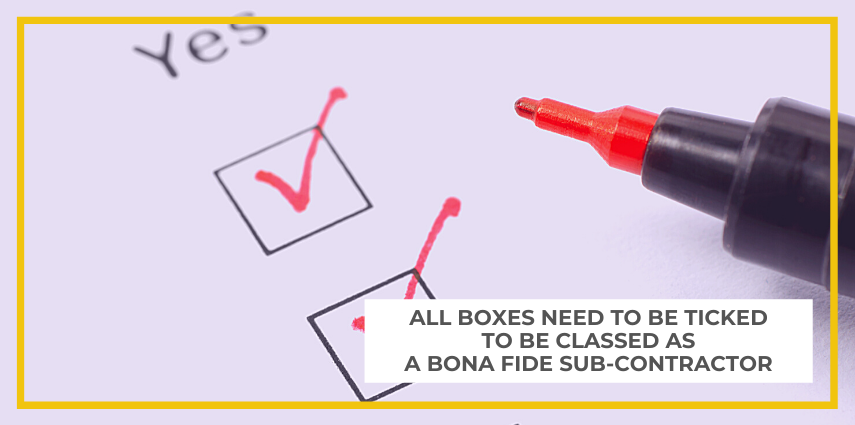When working with sub-contractors, it is very important to know the difference between Bona Fide and Labour only sub-contractors. Failing to differentiate between the two correctly could result in costly fines, penalties and in some cases compensation claims.
How do we differentiate between the two?
A Bona Fide sub-contractor will be able to tick off everything in the list below:
- They are solely responsible for the completion of a contract
- They use their own tools and equipment
- They hold their own Public Liability insurance
- They have their own Health and Safety policy
- They carry out and record their own risk assessments and method statements
- They are responsible for the supervision of their own employees
- They are responsible for issuing PPE to their employees
- They tender for each contract and are paid on a contract by contract basis (not paid weekly)
A Labour Only sub-contractor may meet some of the above requirements, but unless ALL of these boxes are ticked they are not classed as Bona Fide by insurance companies and therefore must be classed as Labour Only.

(These definitions differ from HMRC guidelines and are intended for insurance purposes only)
Why does this matter for insurance purposes?
If in the eyes of the insurer, the sub-contractor does not meet the criteria to be classed as Bona Fide, they will be considered a Labour Only sub-contractor. This means that the policyholder will be required to supervise the sub-contractor. In this situation, if the sub-contractor injures themselves onsite, the policyholder will be responsible for compensation for their injuries.
Payments to sub-contractors and how they relate to your policy
It is important to declare the annual payments made to Labour Only sub-contractors to your insurance company under your Employers Liability insurance section. This is because if a sub-contractor is deemed to be Labour Only by the insurer, but no payments are declared, technically you will not be insured for any injuries they may suffer during the course of their duties and you may therefore be liable for compensation for their injuries.
With a Bona Fide sub-contractor you do not have to include their annual payments under your Employers Liability section because they are not a direct employee or a Labour Only sub-contractor.
However, you do need to include your annual payments made to Bona Fide sub-contractors under your Public Liability section so that cover is there on a contingency basis in case their insurance doesn’t perform.

Your Public Liability insurance will only perform in the event that theirs does not. For example, unbeknown to you, the Bona Fide sub-contractor may have missed monthly payments and their policy may have been cancelled mid-term. Or, the claim amount may be less than their policy excess or there may be specific exclusions within their policy. Even if you have a copy of their policy, do bear in mind that this is normally only required on an annual basis and things may change during the course of their insurance year.
To reiterate, annual payments to Labour Only sub-contractors must be declared under both your Employers Liability and Public Liability sections, annual payments to Bona Fide sub-contractors are only declared under your Public Liability section.
Summary
To summarise, please make sure that any sub-contractors you use are classified correctly in the first instance and that annual payments made to sub-contractors are always declared to your insurer.
If you are unsure if a sub-contractor should be classed as Bona Fide or Labour only then please speak to your insurance adviser.
